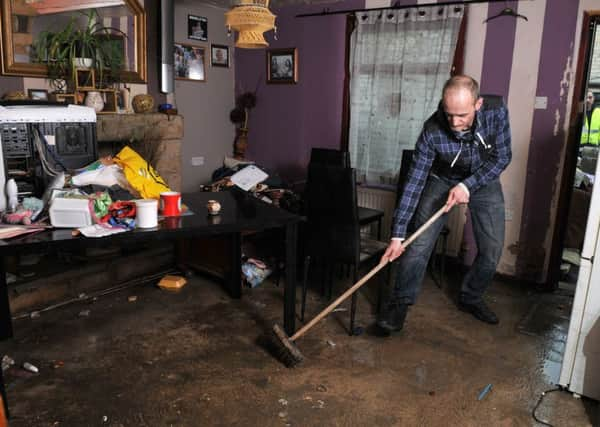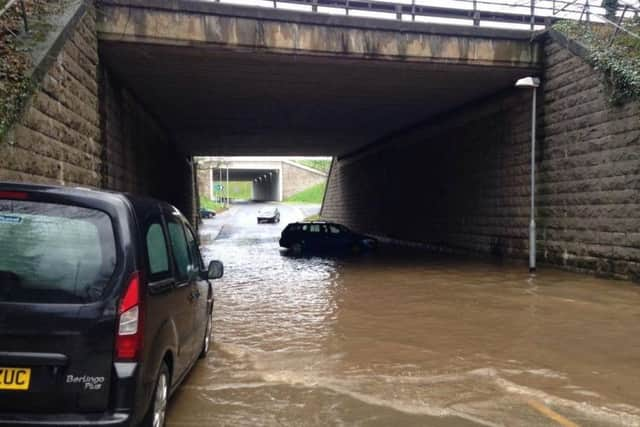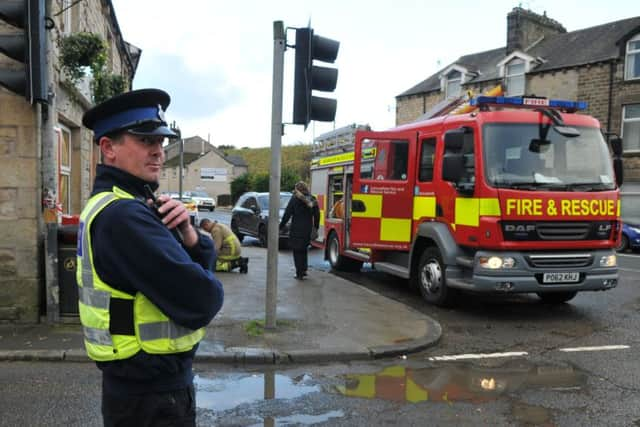‘Surprise’ over no Major Emergency call during 2017 Lancaster flooding


An overview report of the flooding which struck in November 2017 has now been published by Lancashire County Council.
The report said that “with hindsight” it is surprising that a Major Emergency was not established across the affected district council areas as “this would have maximised the scope for the affected organisations to understand the wider aspects of the event as it occurred, and would have enabled them to call on additional resources to help manage the incident and minimise the problems experienced.”
Advertisement
Hide AdAdvertisement
Hide AdThe intense rain storm travelled from the Irish Sea coast at Blackpool and headed north-east to the Lancaster area, causing widespread flooding overnight on November 22.


More than 900 homes and other premises were flooded across the wider area, with 436 homes internally flooded and 70 households evacuated overnight in the village of Galgate.
More than 600 properties were affected in the Lancaster district alone.
Lancaster University’s Hazelrigg Weather Station recorded 73.6mm of rain over 24 hours, the highest since observations began there 50 years ago.
Advertisement
Hide AdAdvertisement
Hide AdFor comparison, Storm Desmond in December 2015 recorded 59.7mm of rain during a 24 hour period.


The worst affected areas in the Lancaster district included Galgate (157 properties affected, 114 internally flooded), Halton (90 properties affected, 38 internally flooded), South Lancaster (62 properties affected, 39 internally flooded), Lancaster city centre (41 properties affected, 19 internally flooded), Caton (33 properties affected, 17 internally flooded), Priest Hutton (31 properties affected, seven internally flooded).
The new report, which has been compiled by the council as the Lead Local Flood Authority, found the rainfall event was highly damaging as it overwhelmed all natural and constructed drainage networks in its path, causing extensive surface water and river flooding.
It also dislodged soil/silt and vegetation which blocked drainage networks that might otherwise have coped with the surface water.
Advertisement
Hide AdAdvertisement
Hide AdMany roads, including those used for critical emergency access, were obstructed by flood water, and bow waves from passing traffic caused standing water to enter private property and houses close to roads.
The report details the flooding issues which were reported to the drainage authorities, including the county council, the district and city councils, United Utilities plc and the Environment Agency, because of the incident.
It also updates where work has since taken place or where investigations are still ongoing to understand whether improvements can be made to help manage future flood risks.
The report aims to help improve flood resilience in the affected areas.
Advertisement
Hide AdAdvertisement
Hide AdThe county council, together with its partner organisations, says it has developed an improved understanding of the way incident response, community engagement and data collection activities are interlinked.
This has led to improved procedures to deal with future flooding events and improve flood infrastructure in the county.
County Coun Stephen Clarke, lead member for flooding, said: “The council and its partners have been investigating the many locations that flooded in the November 2017 floods since the first reports came in of how damaging the storm was, and in some cases there is still a lot of work to be done to find worthwhile improvements in how drainage is managed.
“I am very grateful to the many people who have provided detailed information about their experiences during this flood event, which is all very useful in helping the drainage authorities to understand what happened on the night.
Advertisement
Hide AdAdvertisement
Hide Ad“It helps to inform us of how we might work together to reduce flood risk in the future.
“I am very aware that other flood events have happened on other dates and in other places around Lancashire, where people are still hoping for advice about their flood risk. The investigations and Section 19 reports for those events are still being worked on.”
Anyone who may have been flooded and has new information which could reduce the risk of flooding can contact the council email at [email protected] or call 0300 1236780.
The full report can be viewed HERE
Galgate residents ”frustration, desperation and depression after 2017 floods”.